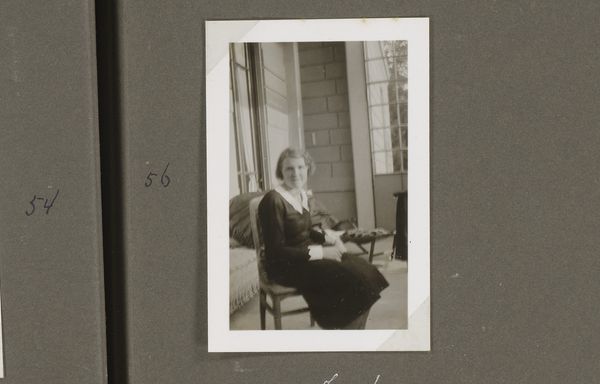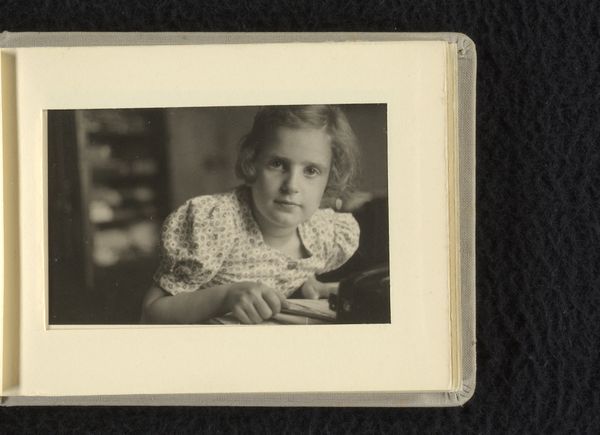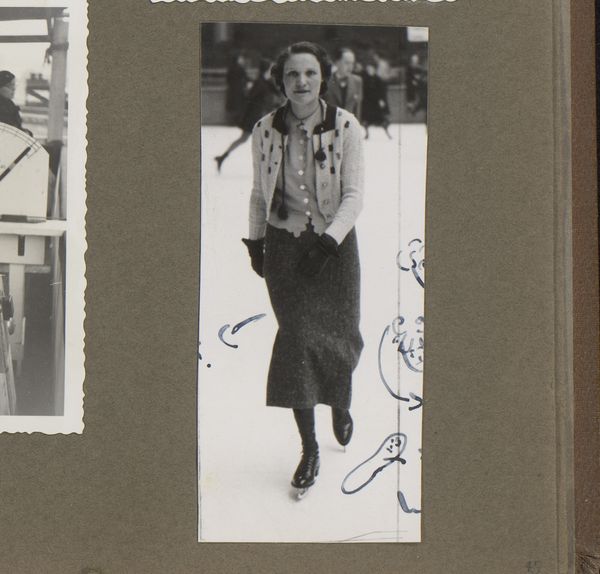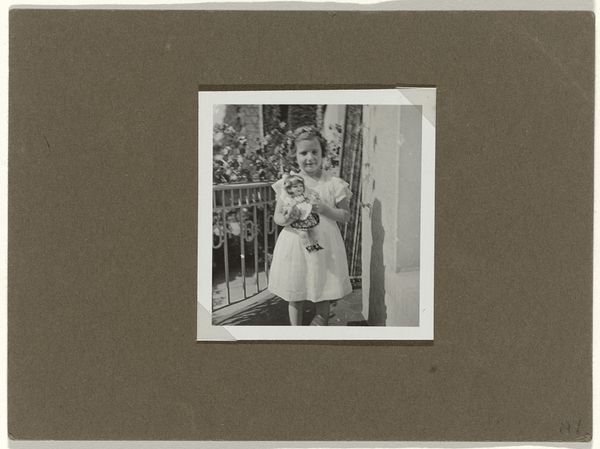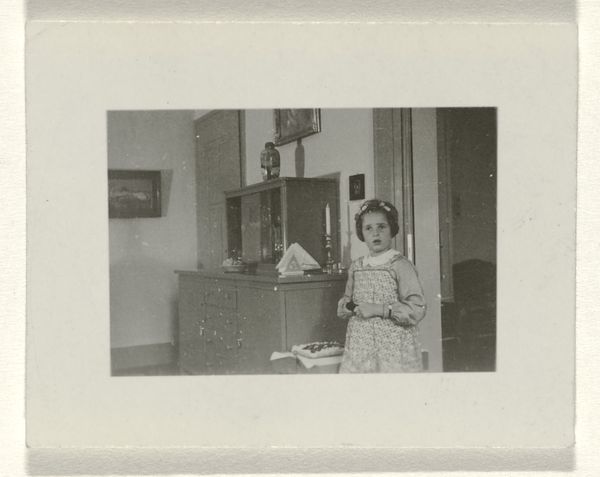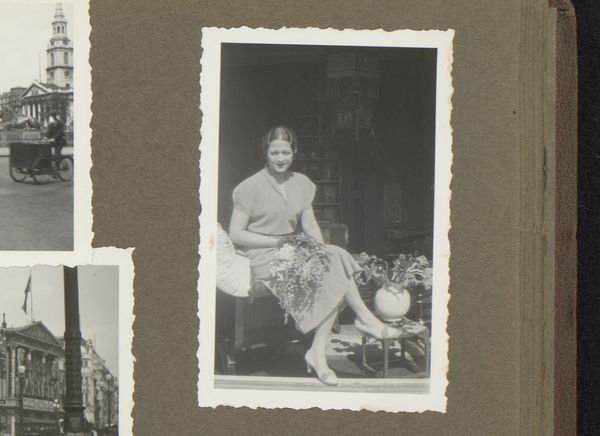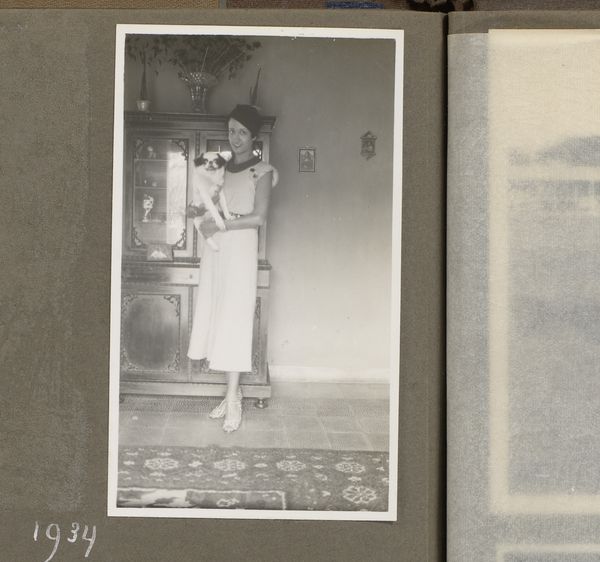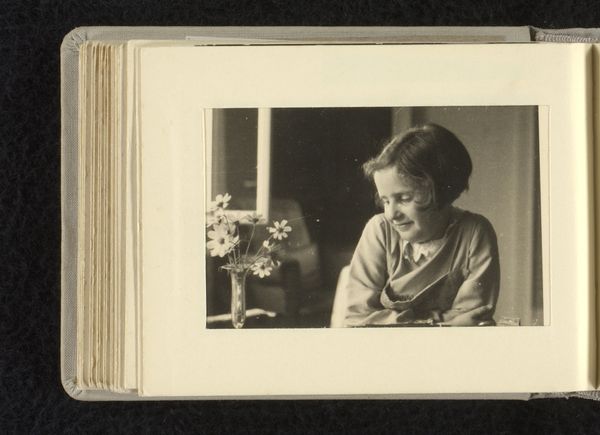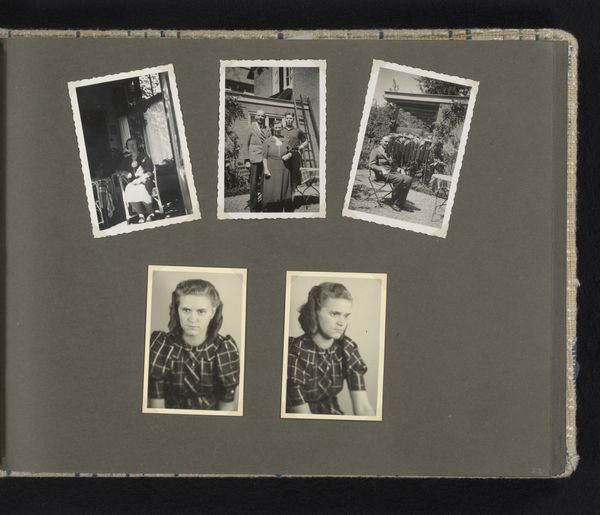
Isabel Wachenheimer voor de balkondeur van de woning van de familie Wachenheimer, juni-augustus 1937, Stuttgart c. 1937 - 1938
0:00
0:00
photography
#
portrait
#
still-life-photography
#
photography
#
modernism
Dimensions: height 64 mm, width 89 mm, height 81 mm, width 107 mm
Copyright: Rijks Museum: Open Domain
Editor: This photograph, taken circa 1937-1938, is titled "Isabel Wachenheimer voor de balkondeur van de woning van de familie Wachenheimer, juni-augustus 1937, Stuttgart." It seems to capture a casual moment. What strikes me is the everyday nature of the image juxtaposed with the potential historical weight of the period. What can you tell me about this photograph? Curator: It’s interesting to consider this photographic portrait through a materialist lens. Let's think about the means of production. Black and white photography in the late 1930s had become relatively accessible, but still required certain skills and access to darkroom equipment and materials. This image, likely intended for personal or familial use, tells us something about the Wachenheimer family’s relative socio-economic standing, allowing them the resources for photography. Do you notice anything about the way it’s presented within the album itself? Editor: I do, now that you mention it. It appears to be adhered into an album; the pages seem thick and fibrous, almost like cardstock. The act of placing this image in an album suggests an intention to preserve memory, to curate a personal history. Curator: Exactly! This presentation is not purely aesthetic but embedded within the historical and social context. Who was producing the materials to make the family photo album? And who had access to creating personal archives in this era of increasing social division? Were they aware of the power inherent in producing these materials? Editor: That makes me reconsider the photo; it appears domestic, but the production and preservation imply a social status, which, thinking about the date, introduces other complex themes. So it is about more than simply depicting a subject, it's also a statement, conscious or not, of place and privilege? Curator: Precisely. Understanding photography, the photograph, and the album as material objects and products of specific socio-economic forces provides critical insight. Editor: This perspective really broadens the potential ways of reading a simple portrait. Thank you for pointing out those historical material details; I had never really considered them before!
Comments
No comments
Be the first to comment and join the conversation on the ultimate creative platform.
